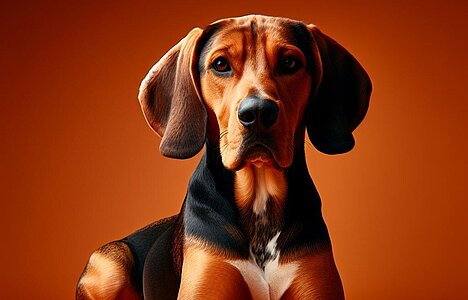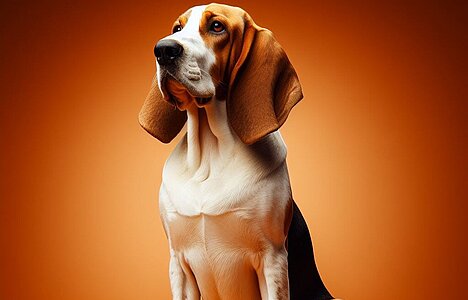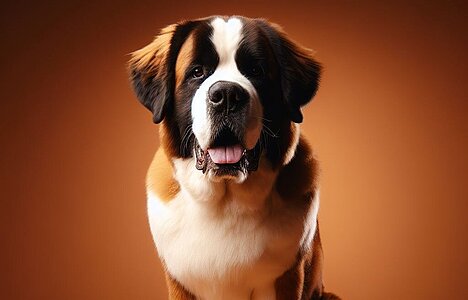The Bernese hound: A versatile hunting dog with charm
History of the Bernese hound
The Bernese hound has its roots in Switzerland and is one of the oldest hounds in Europe. Its origins date back to the Middle Ages, when it was used to hunt game, particularly in the Bern region. The breed was specifically bred for endurance, speed and a keen sense of smell. These characteristics made it an excellent hunting companion. The Bernese hound was first officially described in 1882, and since then it has firmly established itself in the world of hunting dogs.
Character and suitability
The Bernese hound is known for its friendly and even-tempered character. It is intelligent, eager to learn and has a strong hunting instinct. This breed is ideal for active people who spend a lot of time outdoors and enjoy hiking or jogging. The Bernese hound also cuts a fine figure as a family dog, as it gets on well with children and other pets. However, it needs consistent training and sufficient activity to remain happy and balanced.
Appearance of the Bernese hound
The Bernese hound is a medium-sized dog with an elegant, slender build. Males reach a shoulder height of around 48 to 59 cm, bitches remain somewhat smaller. The weight varies between 15 and 20 kg. Its short to medium-length coat is dense and smooth, usually white with black or brown markings. Characteristic are the long, drooping ears and the expressive, dark eyes.
Grooming and health
Grooming the Bernese hound is relatively uncomplicated. The coat should be brushed regularly to remove loose hair and promote healthy skin. An occasional bath is sufficient to keep it clean. The ears should be checked and cleaned regularly to prevent infection. In terms of health, the Bernese hound is a robust breed, however, as with all breeds, genetic conditions can occur. These include hip dysplasia and ear problems. Regular veterinary examinations are therefore recommended.
Exercise requirements and housing situation
The Bernese hound needs a lot of exercise and loves to go for long walks or runs. It is therefore particularly suitable for a home with a garden or for people who live in rural areas. He only feels comfortable in the city if he gets enough exercise and activity. Long walks and regular, intensive exercise sessions are a must.
Training recommendations
Patience and consistency are required when training the Bernese hound. Thanks to its intelligence, it learns quickly, but needs clear rules and a loving but firm hand. Positive reinforcement, such as treats and praise, work wonders with this breed. Early socialization training is important to ensure that the Bernese hound gets along well with other dogs and people.
Behavior and interaction
The Bernese Hound is a social and friendly dog that gets along well with children and other animals. Its patient and loving nature makes it an ideal family dog. However, it is also a passionate hunter and should therefore be introduced to other pets at an early age to avoid problems. Its pronounced hunting instinct can sometimes lead to a strong urge to run free, which is why a securely fenced garden is an advantage.
Recognition by the FCI
The Bernese hound is recognized by the Fédération Cynologique Internationale (FCI) and is listed in Group 6, Section 1.2 (Medium-sized hounds). This recognition underlines the importance and standard of this breed in the international dog community.
Information
Alternative Names
Country of origin
Appearance
Height at withers
Weight
Life expectancy
Breeding
FCI-Group
Standard
Section
More pictures
Similar to Bernese hound
These dog breeds look similar to the Bernese hound or resemble it in character.




